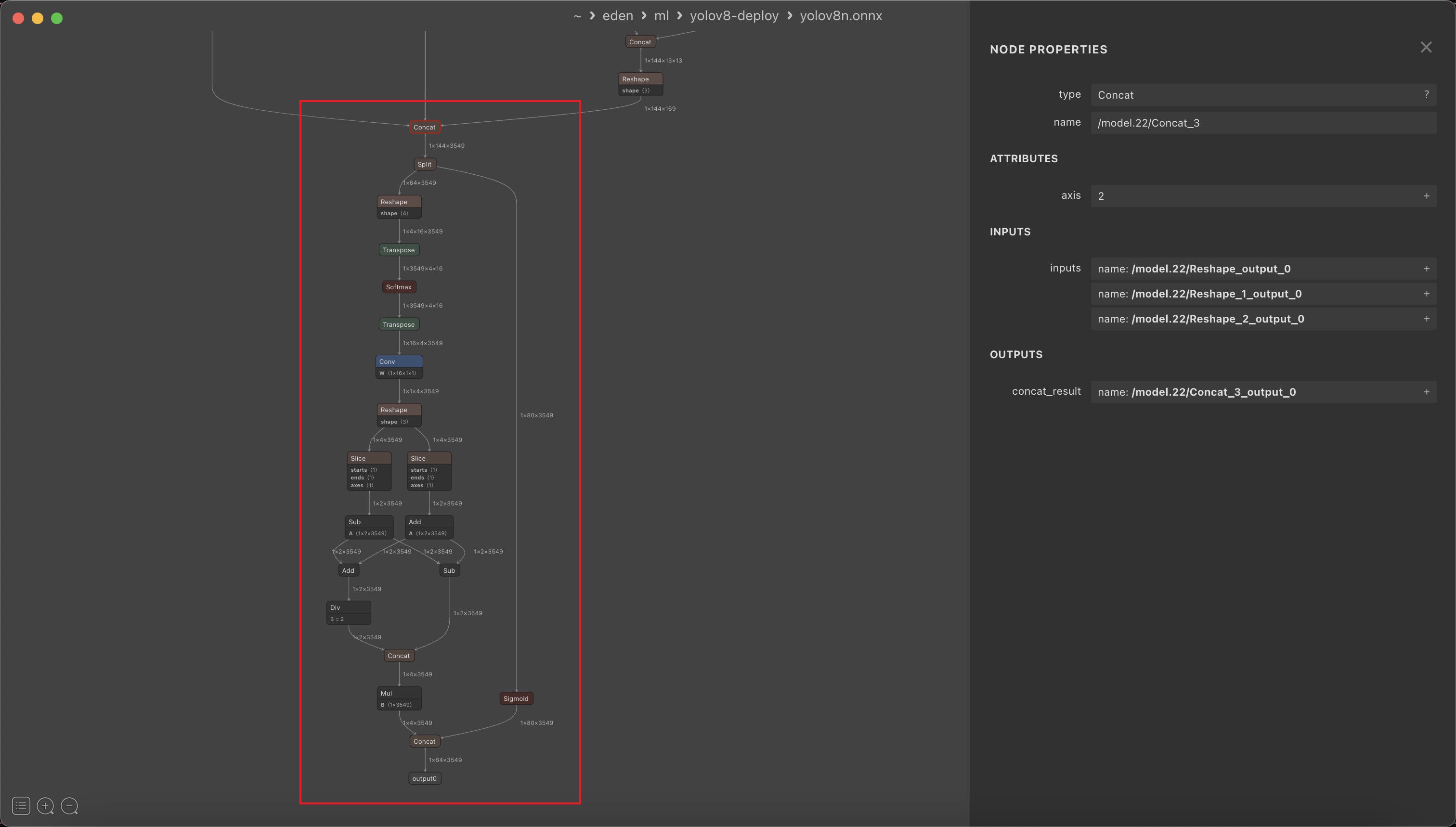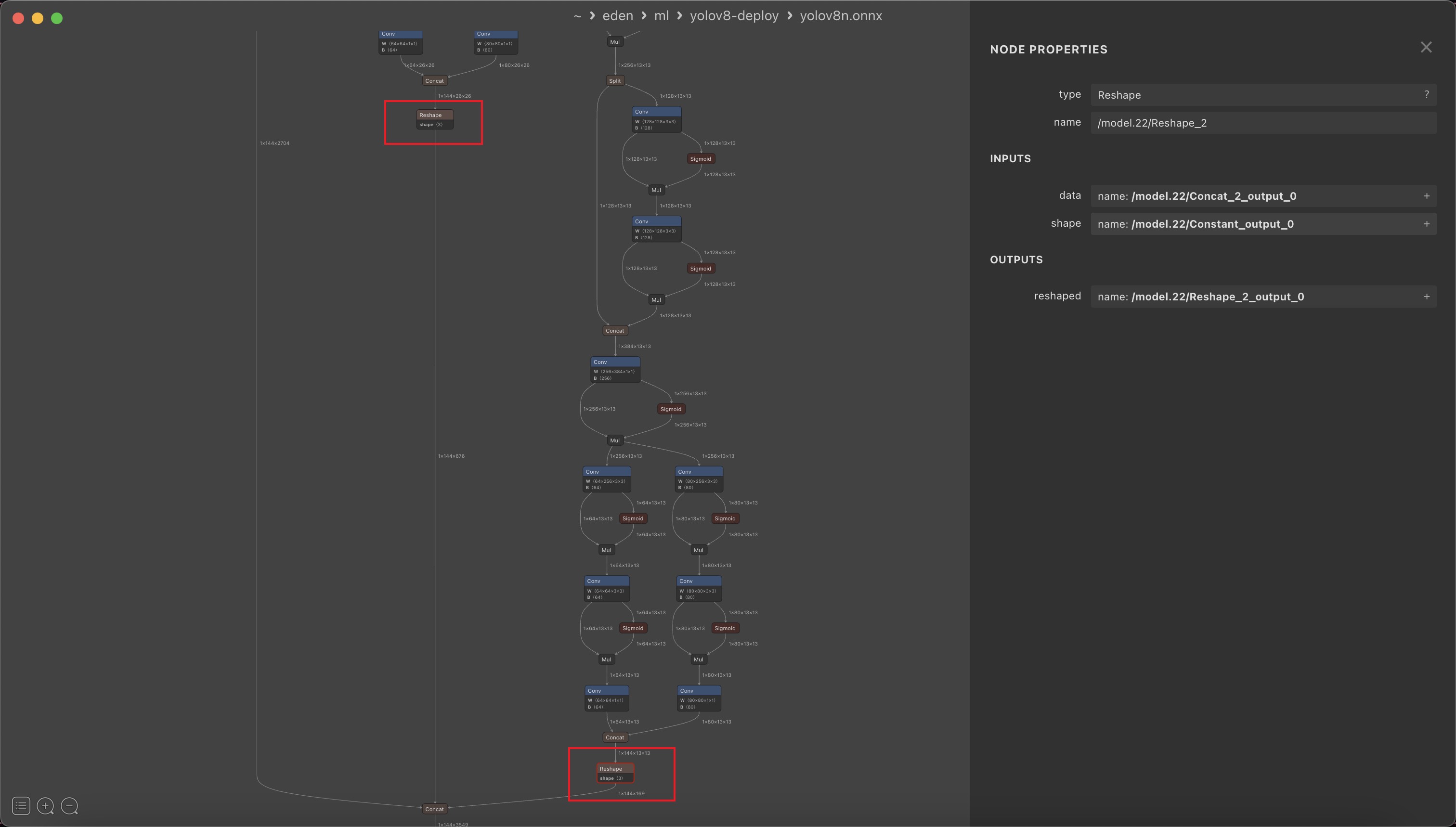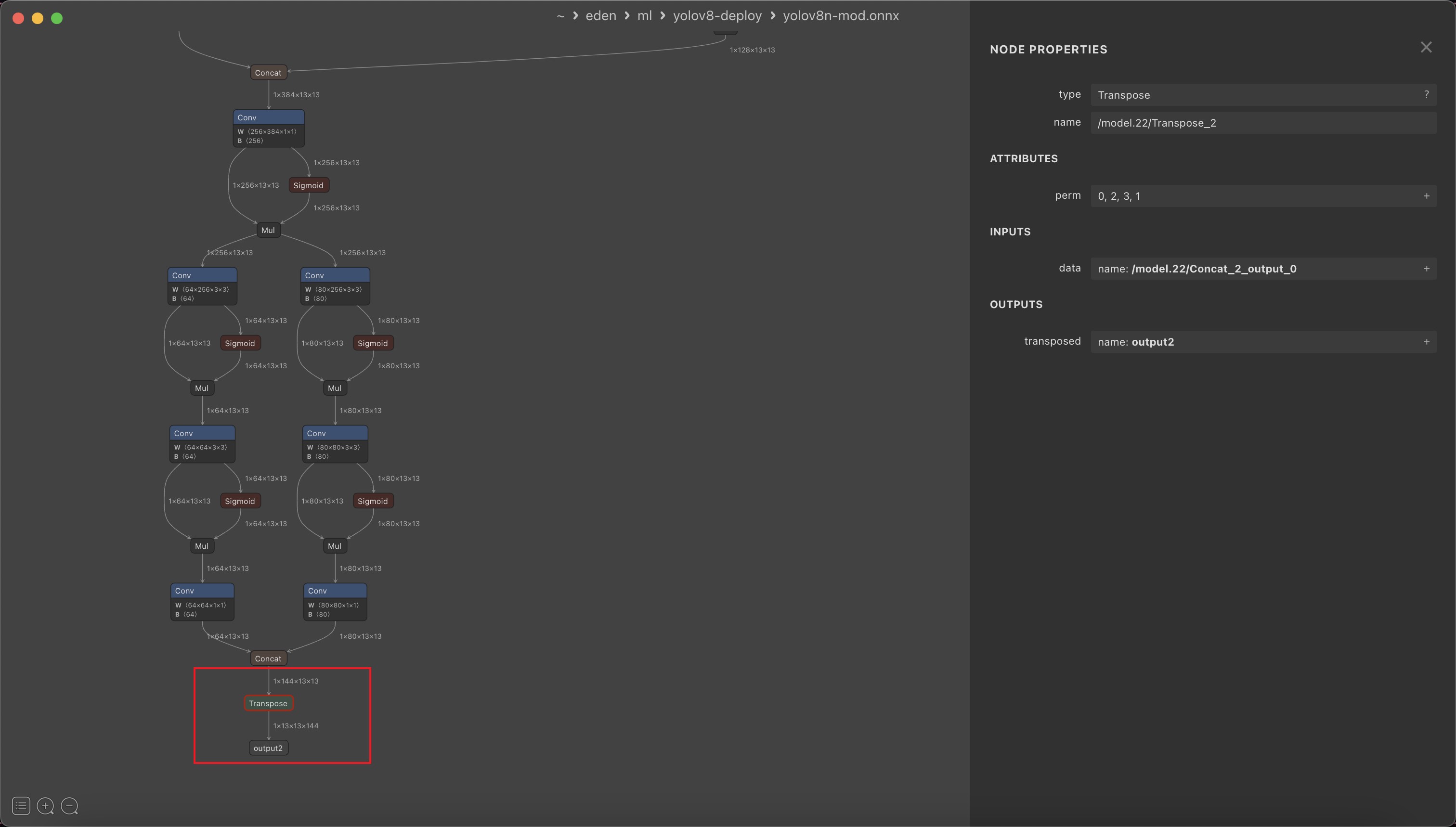This is a small utility used to remove the post-processing part of the yolov8 model.
⚠️ Warning: Only Object Detection is supported right now
For the deployment side, it is often not a good choice to include post-processing within the model. In specific deployment environments such as NPU or other frameworks like NCNN/RKNN, the presence of post-processing can introduce unnecessary or unsupported operators, resulting in performance degradation or even inference failure.
In the past, the solution was to modify the source code within ultralytics’ package when exporting ONNX models and then revert back before training. However, I found this process cumbersome and time-consuming. Therefore, I have developed a simple program that allows you to complete the entire process using official toolchains.
By importing models generated through official means and running yolov8-deploy, voila! You will obtain a model file without any post-processing stuff!
-
Make sure your Python version is >=
3.11. -
Install dependency.
pip install -r requirements.txt
-
Run the mod tool.
python mod.py -i yolov8n.onnx -o yolov8n-mod.onnx # or python mod.py --input yolov8m.onnx --output yolov8m.onnx --force # more info, please run: python mod.py -h
-
Validate result (Optional).
python infer.py -m yolov8n-mod.onnx -i bus.jpg # or python infer.py --model yolov8m-mod.onnx -i blabla.jpg
Let’s compare the files yolov8n.onnx and yolov8n-mod.onnx.
- post-processing part
This step is for the convenience of subsequent processing.
From
$\mathrm{B\times144\times H\times W}$ to$\mathrm{B\times H\times W\times144}$ ,$144$ represents$80$ categories of scores plus$64$ DFL regression parameters.If the toolchain you are using doesn’t support multiple outputs, you can add a concat operator after these transpose operators to pack them together.
- C++: you can refer to this repo, great shoutout to triple-Mu, without him I would not have been able to develop this utility.
- Python/NCNN: https://github.com/Sped0n/vega/blob/72d8fc4e0b3d3a98e77f1333fbcce3e8206e8fe1/ml/__init__.py#L21-L138


